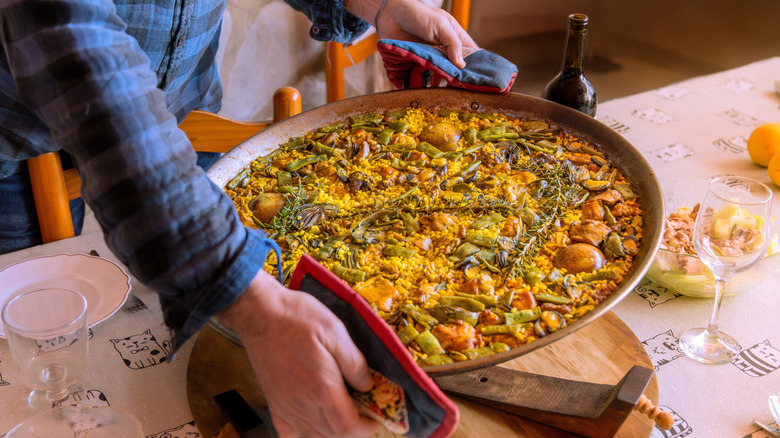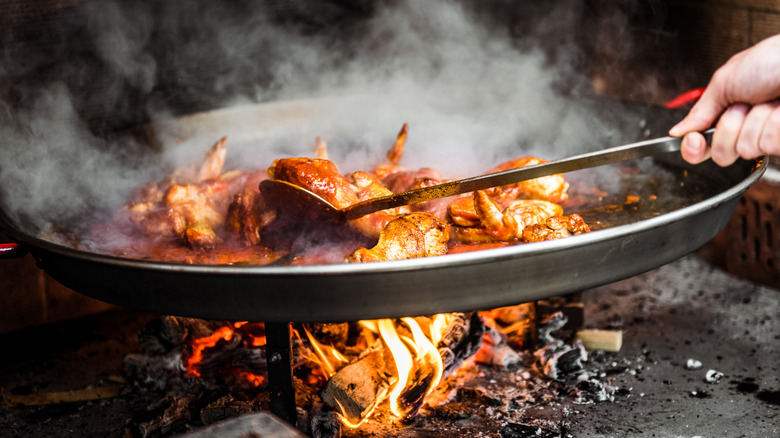The 2 Unexpected Ingredients That Make Up Traditional Paella (Hint: Neither Are Seafood)
When Arabs brought rice to the Iberian Peninsula sometime between the 8th and 10th centuries, they set in motion a series of events that, five centuries later, would give rise to the invention of paella. Spain's delectable national dish was born in Valencia and is made in a single large pan (also called paella) where rice, vegetables, and different meats are thrown together and cooked in broth. A combination of herbs and spices infuse the ingredients with deep and varied flavors, resulting in a meal that has become popular around the world. Yet, despite its international renown, most people have never tried traditional paella. Instead of seafood, Valencian paella uses chicken, and two meats many foreigners would consider unusual: rabbit and snails.
Likely invented by farmers who gathered ingredients that were easily available to them, original paella included components like snails, rabbit, duck, beans (particularly garrofó), different vegetables, and (sometimes) chicken. Tomatoes were added after Spain brought them to Europe from its colonies in the Americas. At some point, saffron became indispensable, giving the dish its color. These elements were mixed in a large paella pan that was placed over an open fire made with vines and orange tree wood. People gathered around the pan, cooking, then savoring the meal together in communal-style eating. This is largely how most Valencians continue to enjoy traditional paella — the main difference is that chicken became the predominant meat in the 19th century, though you'll still find snails and rabbit in many local recipes.
How to enjoy traditional Valencian paella
The best way to try real Valencian paella is, of course, to visit Valencia. Great spots that serve paella within the city proper include Llisa Negra and Casa Carmela, both of which use a wood fire. For an even more unique experience, make this into a day trip and head into the countryside to places like La Barraca de Toni Montoliu, where you'll have an incredible field-to-plate experience. Hardcore fans of the dish might even want to plan their trip around World Paella Day, celebrated annually on September 20th with public tastings, cultural events, and paella competitions.
Sadly, you'll have a hard time finding Valencian paella outside of Spain, since not all restaurants can accommodate live fire cooking, and since rabbit and snail aren't widely consumed in many parts of the world, including the U.S. Rather than despair, take this as an opportunity to learn how to make this tasty meal. You may not be able to build an open fire, but you can get as close to the original recipe as possible. That said, you should be strict about your ingredients. As with the differences between jamón ibérico and serrano, Spanish people take their food and how it's made very seriously, so only use senia, bomba, and Albufera rice if you want to make proper paella. It's also important to keep the communal aspect of the dish alive. Beyond its delicious flavor, paella's importance lies in its wonderful ability to bring people together to share food, stories, and laughter.

